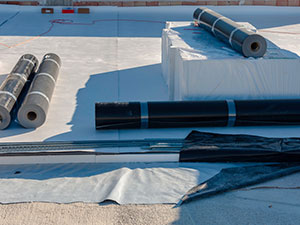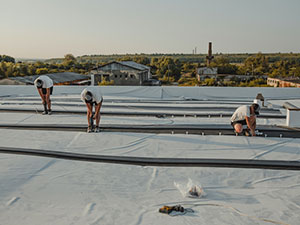
Single-ply roofing options have been increasingly popular over the past few decades. Still, there are a lot of people who have never heard of this new method. Businesses and roofing contractors alike have taken notice of this roofing material, which is specifically designed for low-slope roofs, and have employed it in a number of contexts. Adaptable, eco-friendly, and resistant to damaging UV rays, these systems are gaining fresh ground in a huge way in the industry today. If you are from Fairbanks, AK, and need more information, then look no further than Yoder Commercial Roofing. Get in touch with us at 800-915-6270.
Everything you need to know about single-ply roofing membranes:
It’s no secret that single-ply roofing systems use a single sheet of water-resistant material to protect both the building and whatever lays above it. If the layer is mechanically fastened to the insulation, it can be ballasted (weighted down with pebbles). You may find a wide range of single-ply systems, materials, and technologies to suit your specific requirements in this regard as well. What’s the one thing they all share? All of them have a single roof membrane that covers them all.

EPDM and TPO are two of the most often used single-ply membranes. Ethylene Propylene Diene Monomer is the most prevalent rubber roof material (EPDM). A synthetic rubber polymer is used to make this roof membrane. Despite its prevalence in the northern states, this roof type has a number of drawbacks. Weather conditions, such as temperature, have a significant impact on the performance of EPDM roofing systems. Due to the product’s type and color, EPDM’s emissivity is extremely low. This means that it will not effectively release heat. This causes your roof to expand and contract more rapidly because of the greater temperature fluctuations. Consequently, your roof’s lifespan will be reduced due to the fact that expansion and contraction can develop cracks.
TPO and PVC roofing membranes, in contrast to EPDM, which changes its physical properties when exposed to hot air and so cannot be joined by hot air welding. Thus, hot air welding is possible, making it possible to construct a solid lap. Thermal plastics are reinforced with polyester scrim in order to make them even more resistant to tearing. This makes the membranes more dimensionally stable and strengthens them. If you are from Fairbanks, AK, and need more information, then look no further than Yoder Commercial Roofing. Get in touch with us at 800-915-6270.
